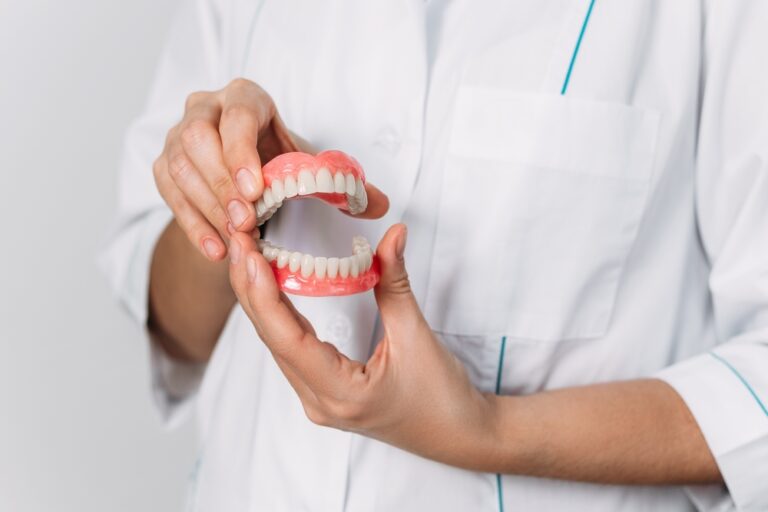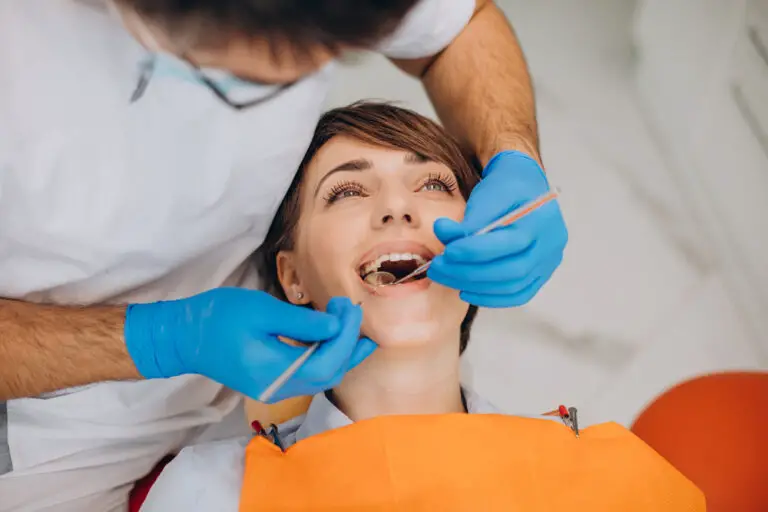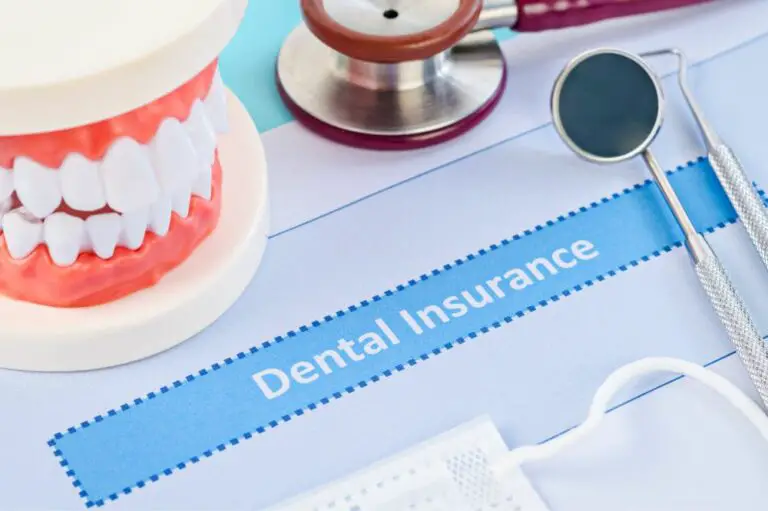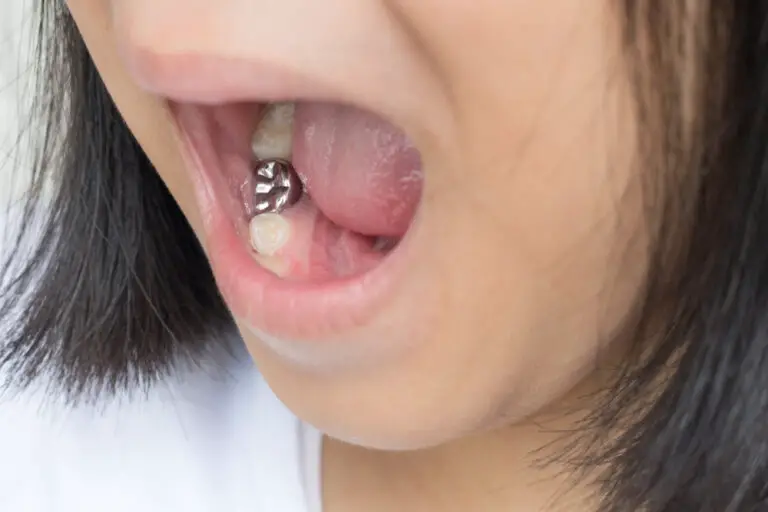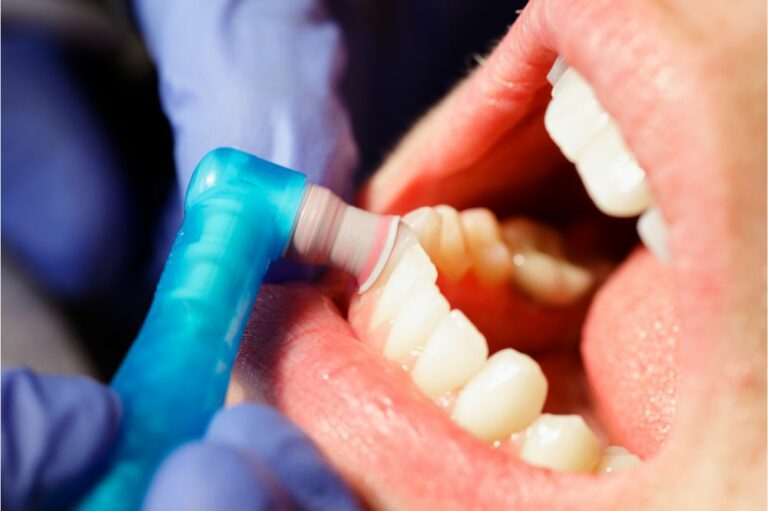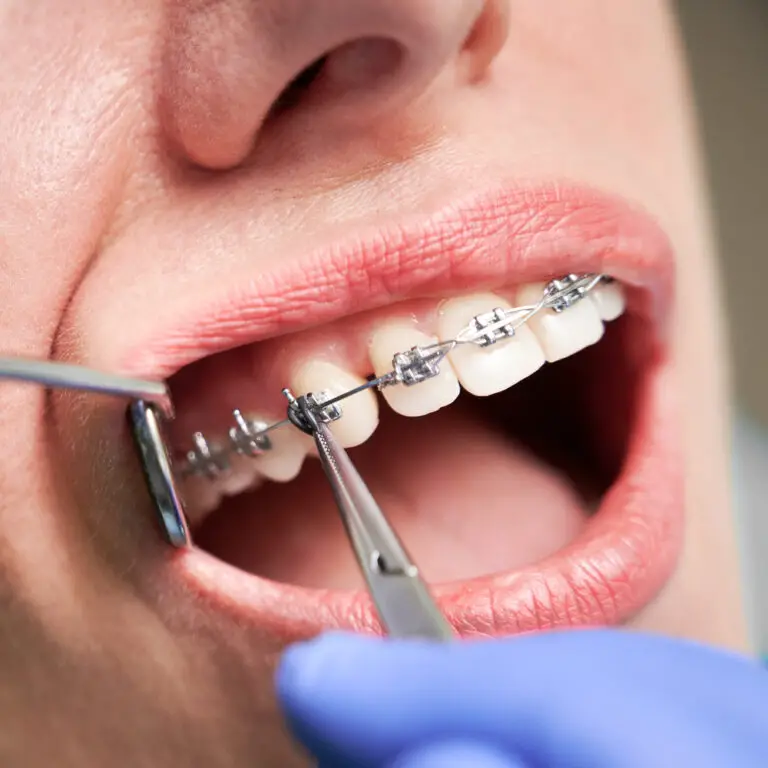Have you noticed a red, tender boil on your gums that hurts a lot? If yes, then you have developed a dental abscess.
Abscess is a dental condition in which pus builds up inside the affected gums, teeth, or the bone holding your teeth. It is triggered by bacterial infection and can spread quickly to the surrounding structures.
So, it’s important to treat dental abscesses as soon as possible. But if you’re unable to reach out to a dentist, here’s how to get rid of dental abscess at home. Read more!
What Causes a Dental Abscess?
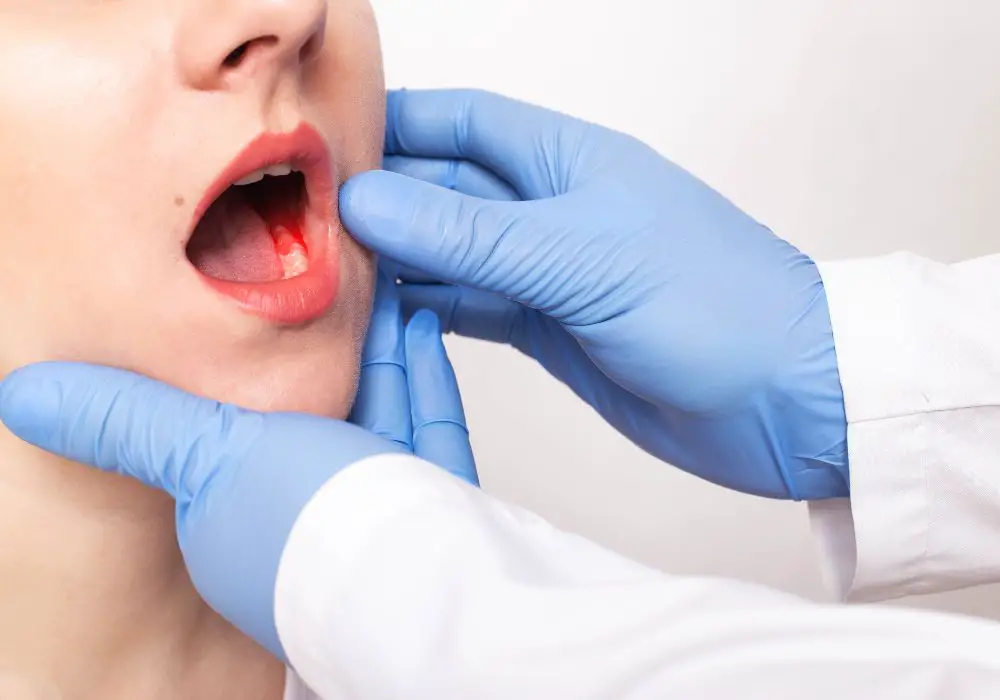
Dental abscess originates from the presence of bacteria. If your tooth is chipped, broken, or decayed and you don’t take care of oral hygiene, the bacteria will attack the tooth – causing a periapical infection.
Also called a periapical abscess, the infection will start at the tip of the tooth root and spread inwards. It will affect the pulp and cause a sharp or throbbing pain. You may also experience the following symptoms:
- Red gums and swelling
- Tooth loosening
- Bumps and boils
- Extreme tooth sensitivity
- Bad breath
- Unpleasant taste
In some cases, the abscess develops from a gum infection called gingival. It doesn’t spread to your teeth or surrounding structures. But it does lead to draining sores and jaw pain.
Adults with gum diseases are also at risk of periodontal infections. The bacteria directly attacks the tissues and the bone that support your teeth. This results in a pocket of pus and other symptoms of abscess discussed above.
Does a Dental Abscess Go Away on Its Own?
The biggest myth about dental abscesses is that they go away on their own. This is not true at all!
A dental abscess needs proper treatment and care. If the swollen pus-filled bumps burst, you will get some relief from the pain and pressure. But you still need to get rid of the bacteria.
When left untreated, the bacteria can spread to the neighboring teeth, gums, and bones. You will develop more abscesses and the condition will worsen.
The infection may extend to your jawbone and neck tissues – making them stiff and swollen!
In extreme cases, your brain (bacterial meningitis) and heart (endocarditis) will be affected too. So, you should never ignore dental abscesses.
Begin the treatment immediately to get rid of the bacteria as soon as possible. Your treatment may take anywhere from 10 to 15 days. However, if you didn’t treat the abscess in the early stages, the treatment may last for 5 to 12 months.
5 Home Remedies to Get Rid of Dental Abscess

The first step of treating a dental abscess is to drain the pus buildups. Sometimes, the abscess ruptures on its own. But if they don’t, you need to find a way to remove the bacteria.
Here are 5 home remedies to do that without going to the dentist:
1. Saltwater Rinse
Salt water rinse does not only relieve dental pain, but it also helps draw out bacteria through osmosis (movement of water molecules from an area of higher concentration to a lower concentration).
The salt crystals stick to the cells and trigger the movement of cell water to the outside. If there are bacteria inside the cell, it will come out with the liquid too. Spit the salt water out and rinse your mouth with fresh water.
2. Garlic Paste
Garlic contains a bioactive compound called allicin. It has powerful antibacterial properties that kill different types of bacteria – including the ones in the mouth.
To use it, chop a clove of garlic and crush it. Add a little water to create a thick paste and apply it to the infected parts. Your breath won’t smell very nice for a couple of hours, so try not to talk or eat/drink anything.
When you feel a significant reduction in pain, rinse your mouth with room-temperature water. Do not swallow the garlic paste because the bacteria may travel inside your body and spark another infection.
3. Baking Soda
Baking soda is commonly known as a cleaning agent. It can help you get rid of stubborn stains and dirt. But did you know this household ingredient also removes bacteria from the mouth?
It has an alkaline nature, and bacteria need acidic conditions to survive. So, when you rinse your mouth with baking soda and water mixture, the pH levels increase and make your mouth alkaline.
Most of the bacteria will become dormant (won’t reproduce) and the infection will stop spreading. If you use a concentrated mixture or apply thick baking soda paste on the affected area, the ingredient can also kill the bacteria.
4. Oil Pulling
Oil pulling is a traditional method used to treat bad breath and bleeding gums. It is believed to remove bacteria and germs from the mouth too.
To use this method, put a tablespoon of coconut oil in your mouth and swish it around the teeth for 10 to 15 minutes. This movement should pull out the toxins and stuck food particles. Spit it into a garbage can.
If you don’t have coconut oil, you can also use sesame or olive oil.
5. Hydrogen Peroxide
Hydrogen peroxide should be used as the last resort. It has antimicrobial properties, but it can also cause internal burning and bleeding. So, it is dangerous when not handled properly.
To use it, you will have to create a mouthwash by adding 3% hydrogen peroxide to 2 parts of room-temperature water. This will lessen the intensity of hydrogen peroxide and make it safe to use.
Now, take a huge sip of the mixture and swish it against the infected areas. Spit it out after 10 to 15 minutes of swishing. If there is no change in your inflammation and redness, use the mouthwash again.
Important Note:
Once the bacteria is out, your abscess symptoms will improve a lot. But don’t just stop there because the bacteria are still present in your mouth. You’ll need specific antibiotics to treat the dental abscess completely. So, visit a doctor at your earliest convenience!
5 Ways to Reduce Dental Abscess Pain at Home

Dental abscess pain can be light to unbearable. It depends on how far the bacterial infection has spread and whether or not the boils have drained. If you wish to get rid of the pain immediately, here are some home remedies to try:
1. Aloe Vera
Aloe vera has natural analgesic and anti-inflammatory properties. When applied topically on the affected gum or teeth, it soothes the inflamed tissues and reduces pain. You can also mix some aloe vera gel into a cup of water and use it as a mouthwash.
2. Essential Oils
Different essential oils are known to carry antioxidant and anti-inflammatory properties. A few examples include oregano oil, clove oil, and thyme oil.
Applying these oils to the dental abscess can help improve the symptoms. But don’t apply the oil directly. Instead, mix 3 to 5 drops of the essential oil into 1 ounce of carrier oil. Then, soak a cotton ball in the mixture and dab it on the tooth abscess.
3. Ice Compression
A dental abscess causes a lot of swelling in your mouth. This can make movement stiff and painful to the point, where eating/drinking might become difficult.
To ease this, gently press an ice cube against the swollen area. The cold compress will constrict the blood vessels and reduce inflammation as well as pain. If it hurts to directly place the ice cube on the infected area, wrap it in a dry towel.
4. Tea
Drinking hot tea is a traditional solution to numb any kind of dental pain. But there are also certain types of herbal teas with soothing properties. These include chamomile, peppermint, and fenugreek.
You can drink them or soak a cotton ball in the tea and swab it to the affected areas. Make sure the tea is not too hot to burn your skin.
5. OTC Painkillers
Over-the-counter painkillers should only be used by people without any other health complications. It’s also best if you have a painkiller recommendation from an expert. Otherwise, you can always take ibuprofen or paracetamol to ease dental pain.
What is the Proper Treatment for Dental Abscess?
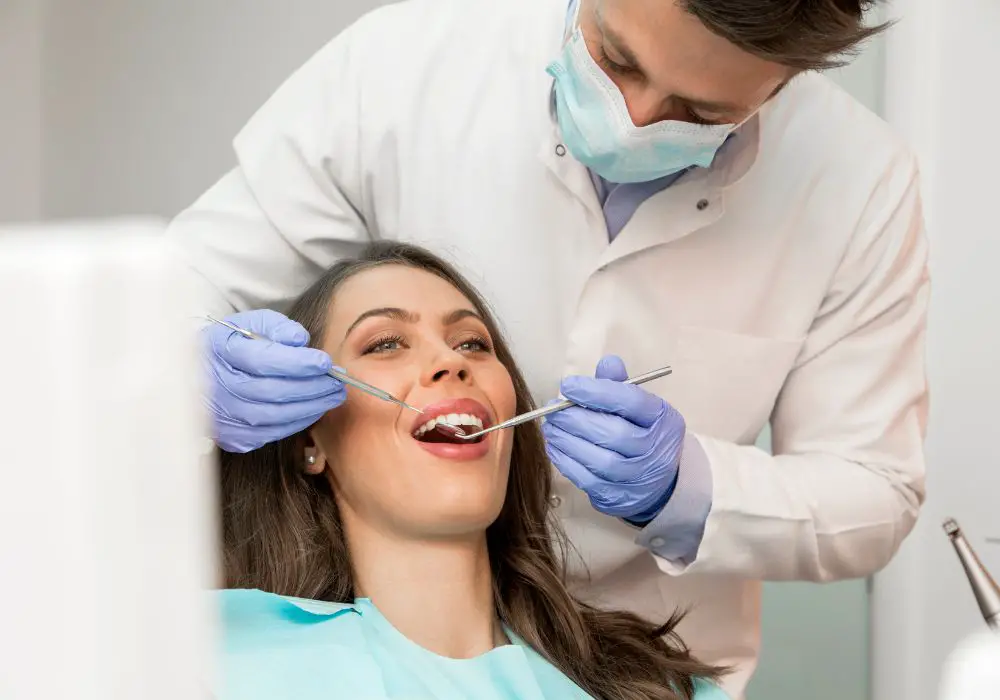
At the hospital, you will go through the proper treatment for dental abscesses. The dentist will first confirm whether it is a dental abscess or something else using a series of tests. These include thermal tests, X-rays, and – in extreme cases – CT scans.
Once it is confirmed, the dentist will begin pus drainage. They may cut the abscess or use a small rubber drain to flush out the bacterial liquid. After this, your teeth will be examined for damage.
If the dental pulp is infected, a root canal treatment will be necessary. However, if the tooth decay is extensive, it will be extracted and antibiotics will be prescribed.
Summary
To recap, an abscess is a serious dental condition that should not be ignored. If you can’t reach out to a dentist immediately, here’s how to get rid of dental abscess at home:
- Saltwater rinse
- Garlic paste
- Baking soda
- Oil pulling
- Hydrogen peroxide
If your concern is only managing pain while you wait for the dentist, you can use aloe vera, essential oils, tea, ice compression, and over-the-counter painkillers. Do you know about any other methods? Let us know in the comments below!

